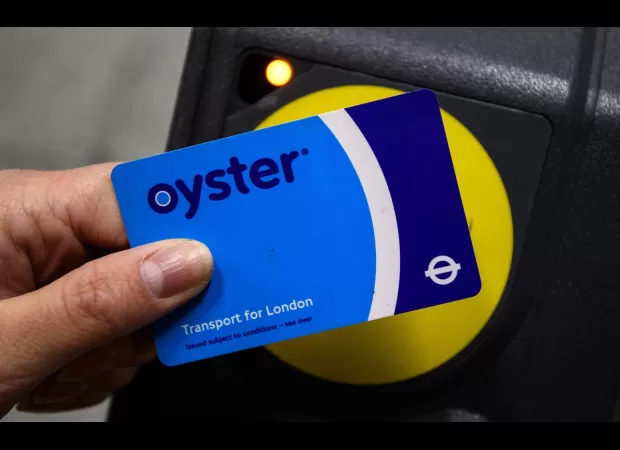London Underground will penalize you for slow travel within the city.
Oyster Card has some hidden fees...

Did you know that you could get fined for traveling too slowly on the London Underground? It's a bustling network that we rely on daily to get us to our destinations quickly and conveniently. However, it's no secret that delays are a common occurrence on the underground. As Londoners, we have become experts on navigating the intricate system, from knowing the different routes and zones to being aware of disruptions and extra charges. But there's one thing that many of us may not be aware of - the maximum journey time limit.
It's common knowledge that when using the pay-as-you-go system, we need to touch in and out at the beginning and end of our journey to avoid unexpected fines. But what many of us may not know is that there's also a penalty for exceeding TFL's maximum journey time. Every journey on the Tube, DLR, London Overground, Elizabeth Line, and National Rail Services has its own maximum journey time, which varies depending on the number of zones crossed, the day of the week, and the time of travel.
For instance, traveling within zones 1-4 on a weekday between 04:30 and 19:00 has a maximum journey time of 1 hour and 30 minutes for zone 1 only, 1 hour and 40 minutes for zones 1-2, and 1 hour and 50 minutes for zones 1-3 and 1-4. However, after 19:00 and on Saturdays, the maximum time increases to 1 hour and 50 minutes for zone 1 only, 1 hour and 50 minutes for zones 1-2, and 2 hours and 5 minutes for zones 1-3 and 1-4. On Sundays and public holidays, the maximum time limit is 2 hours for zone 1 only, 2 hours and 15 minutes for zones 1-2, and 2 hours and 15 minutes for zones 1-3 and 1-4.
These maximum journey time limits also apply to zones 5 and 6. You can find the full list of maximum travel times on the TFL website. The purpose of these time limits is to ensure that commuters don't take excessively long routes or make unnecessary stops, which could result in them being charged two maximum pay-as-you-go fares.
For example, if you travel between zones 1 and 2 on a weekday between 04:30 and 19:00, and your journey exceeds 1 hour and 30 minutes, you will be charged for two maximum fares. The same applies for longer journeys, such as traveling across 10 zones, where the maximum journey time for weekdays between 04:30 and 19:00 is 2 hours and 40 minutes. After 19:00 and on Saturdays, the maximum time increases to 3 hours, and on Sundays and public holidays, it is 3 hours and 15 minutes.
But don't worry, TFL assures us that these maximum time limits are set generously and will only be exceeded in exceptional circumstances. And if you do happen to be charged extra due to reasons beyond your control, such as a severe delay on the network, you may be eligible for an automatic refund.
To avoid any pesky charges, it's essential to keep track of your travel journeys and make sure you don't exceed the maximum journey time limit. You can do this by creating an online account and checking your travel and payment history. So next time you're on the London Underground, be sure to keep an eye on the time and avoid any unexpected fines.
Do you have a story to share about your experiences with the maximum journey time limit? We'd love to hear from you. Get in touch by emailing us at email. And for the latest news from the capital, be sure to visit our London news hub on The Agency's website. Stay informed and avoid those Oyster card fines!






